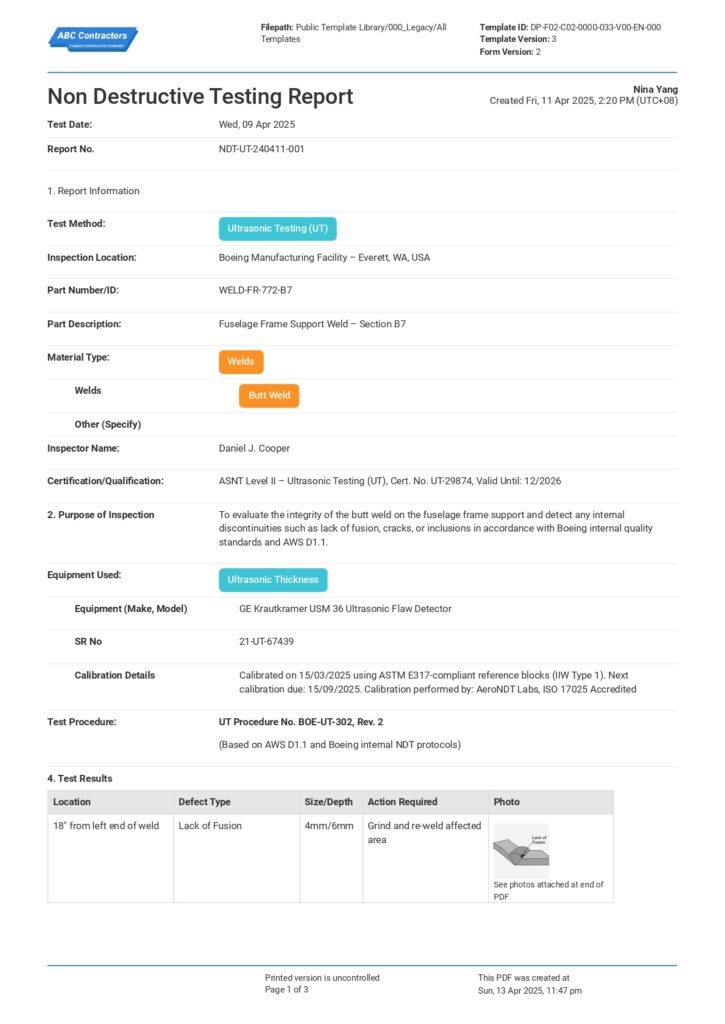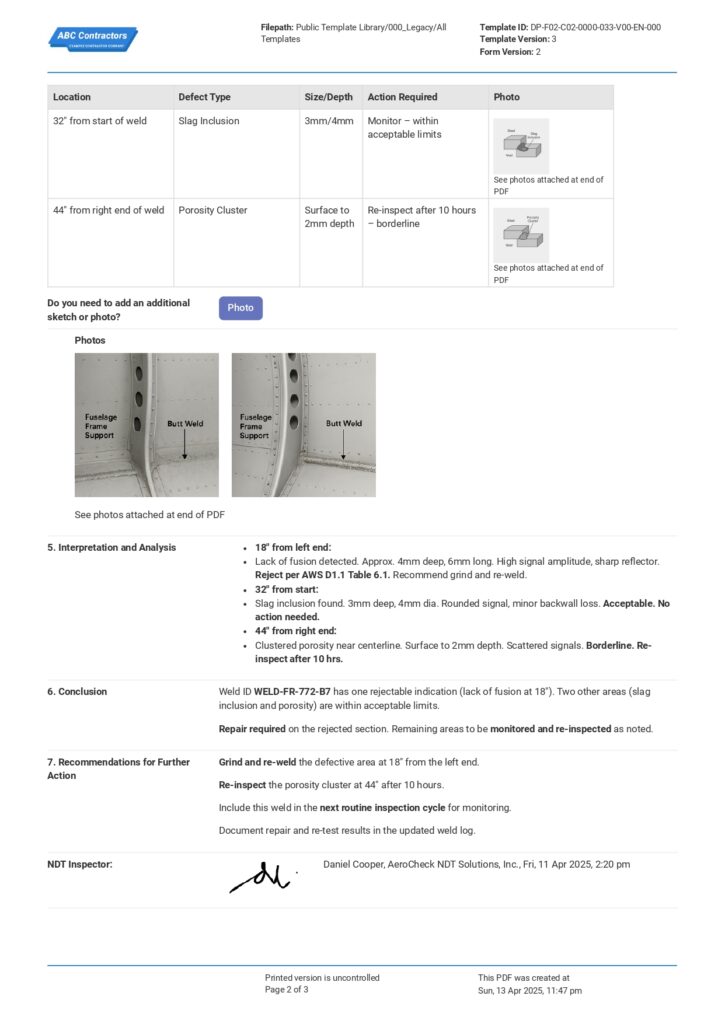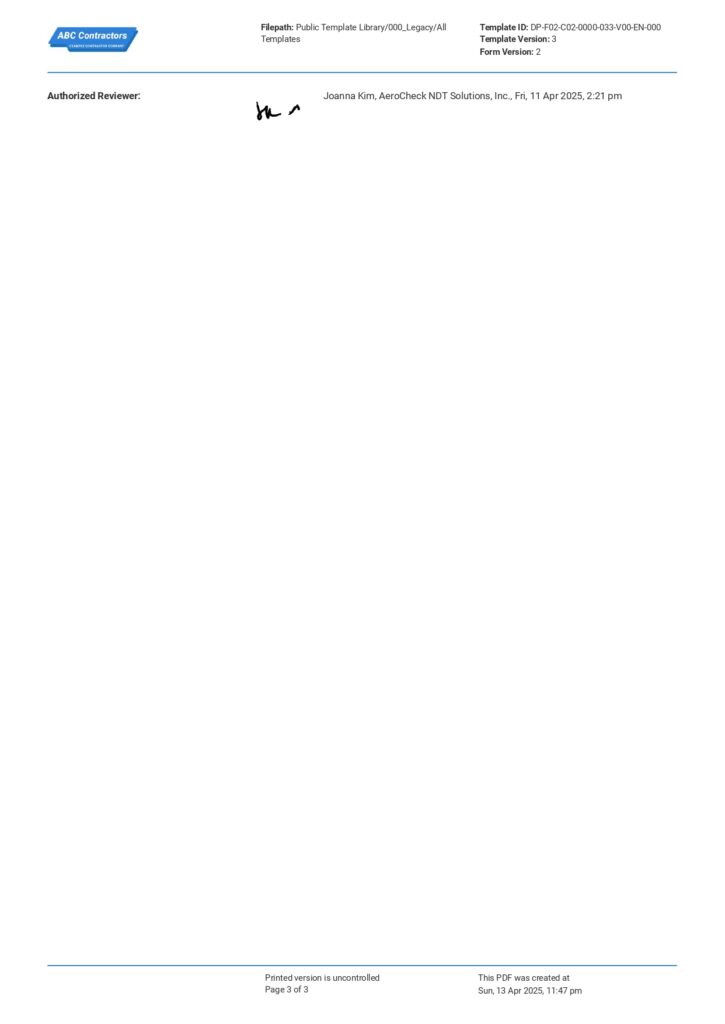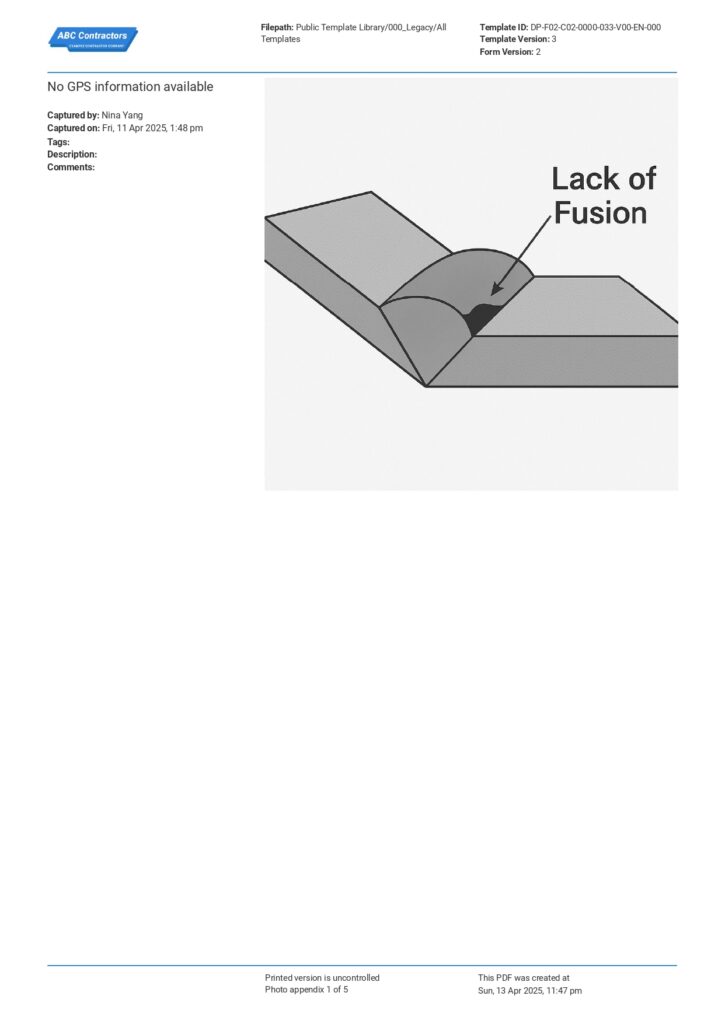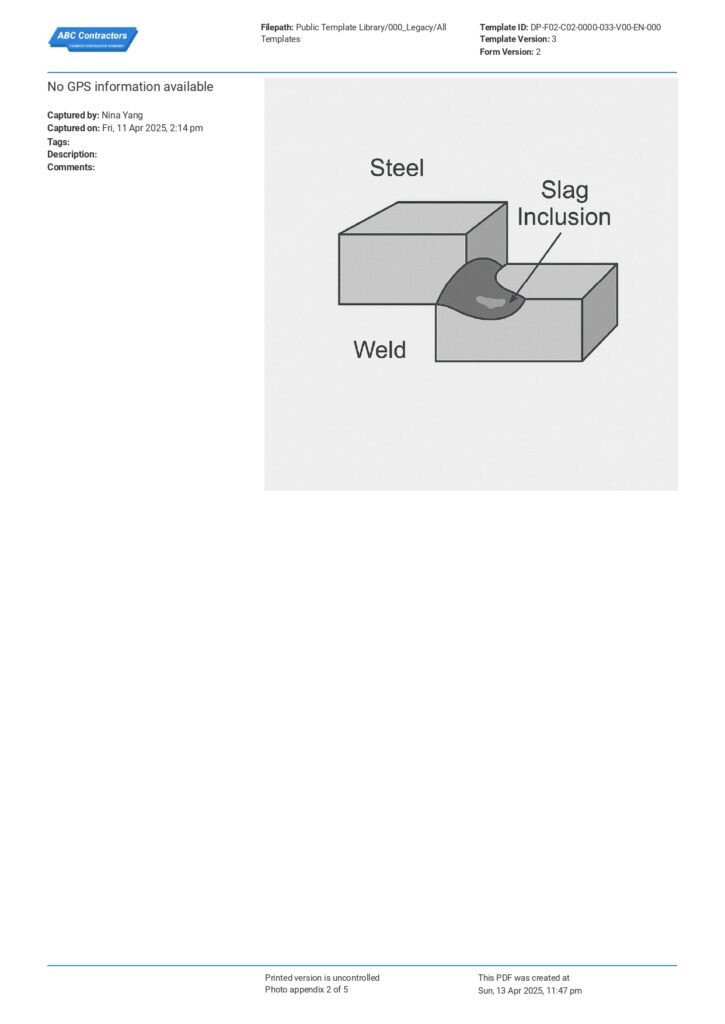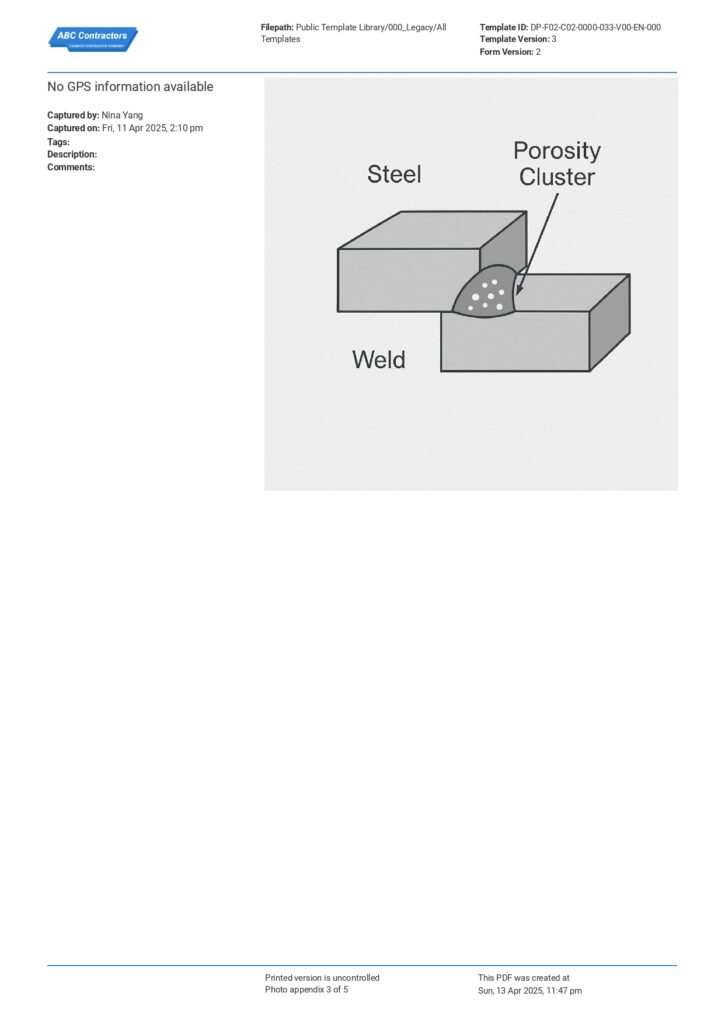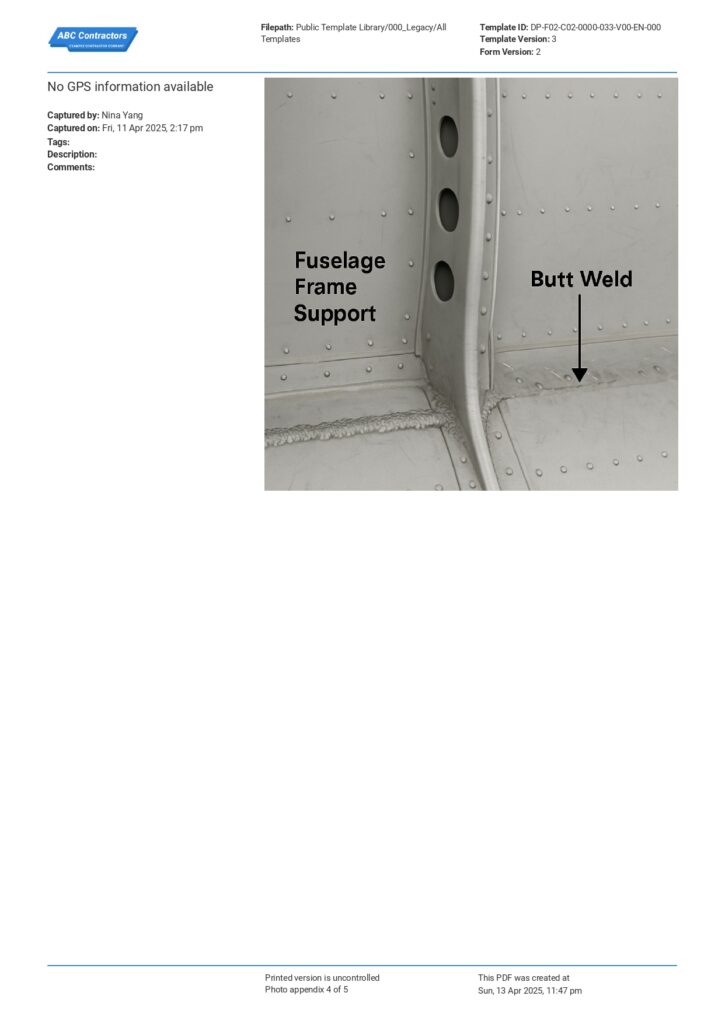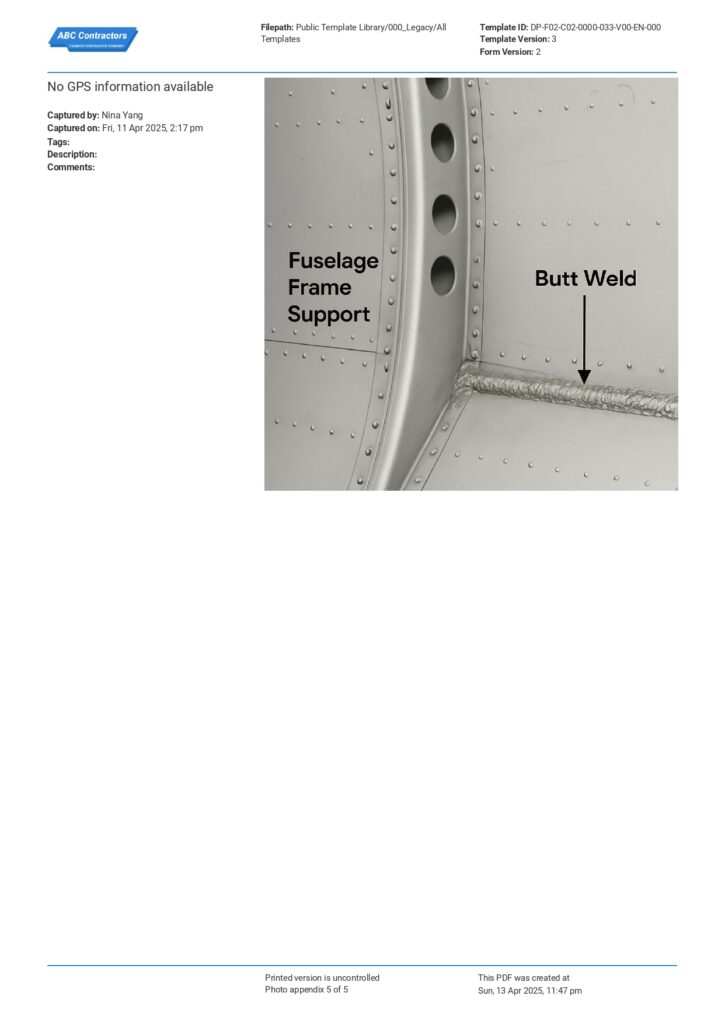Non-Destructive Testing Report Template and Free PDF
Start with a free 30-day trial. No credit card required.
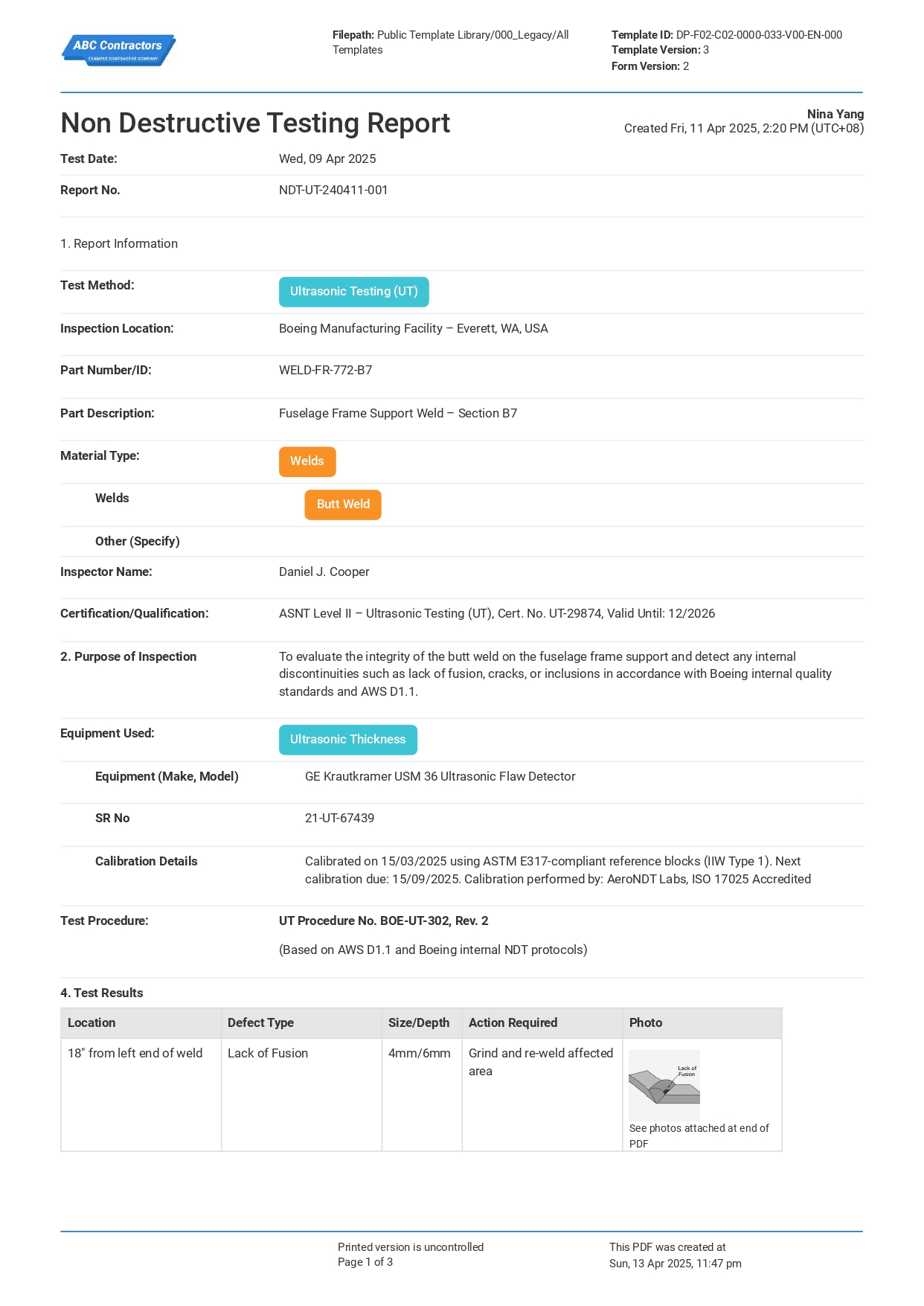
~10,000 employees
~500 employees
~25,000 employees
~20 employees
~50 employees
~1,500 employees
~20 employees
What is a Non-Destructive Testing Report?
Non-destructive testing is an inspection method of different types to verify the performance, quality, and suitability of the material and component or systems without destroying them for the purpose of detecting defects. Different testing approaches are used in NDT, and it is conducted by a certified technician or inspector from a qualified agency. These testing methods are performed in different industries, including oil and gas, aerospace, manufacturing, power generation, medicine, and other industries where safety, reliability, and quality of a material are critical.
Compare this digital Report to rigid forms made in Word, Excel and PDF
Use this Non-Destructive Testing Report template for free
What is the right format for a good non-destructive testing report?
When considering which NDT report format to write. Non-Destructive Report testing format is not really set in stone, but it has standard inclusions to clearly document the inspection details such as the following:
• Report Information – This indicates the test method, inspection location, part details, and material type, such as metals, welds, rubber, alloys, plastics, and others depending on the NDT method.
• Inspector Information – This is the name of the qualified inspector with valid certification of their skills and expertise in the NDT process.
• Purpose of Inspection – Indicating the application of the inspection performed, associated with industrial use cases like evaluating weak points or discontinuities. This also includes the equipment used, which can have calibration information.
• Test Results – Presented in a tabular format, including inspection location, defect type, size/depth, any relevant action required, and a photo or sketch of the testing area and defect.
• Interpretation and Analysis – This is the most critical part of the report, indicating what the test results mean and how they might impact the integrity, safety, or function of the component.
By following these standard inclusions, companies can ensure that the results of their NDT inspections are documented properly, contributing to safety, quality control, and adherence to industry regulations and key standards.
Given this, it is important to use a quality digital document that helps streamline the NDT process and documentation to improve efficiency, accuracy, and compliance with standards.
What are the key standards around Non-Destructive Testing?
If your company is making use of non-destructive testing as the main engineering approach to verify the characteristic of a component used for production, it only make sense to follow few widely accepted criteria to follow international regulations, inspection requirements and testing standards.
Key standards are established with several reputable institutions such as International Organization for Standardization (ISO), which includes the following international regulations.
• ISO 9712:2021 Non-destructive testing — which outlines the standards for assessment and confirmation of the competence of the NDT personnel who performs professional work required to NDT techniques.
• ISO 9001 Quality Management System — translates to providing accurate, and timely inspection services that meet the specific needs of clients of an NDT agency.
• ISO 17640:2018 — Non-destructive testing of welds which specifies techniques of fusion-welded joints in metallic materials of specific thickness.
These are just a few of the essential standards you must adhere to and maintain as part of regulatory requirements and to enhance the trust of your customers.
What’s the difference between Destructive and Non-destructive testing method?
When considering the test technique to inspect the quality and performance of a component, there are two most common approaches, it can either be done through destructive testing or non-destructive testing. What’s the difference?
Destructive Testing (DT) is a classical mechanical test technique that requires damaging the material, sometimes until failure, to evaluate its strength or performance. Some examples are fatigue tests, corrosion tests, hardness tests, or tensile tests. These are typically used in industries like construction, automotive, and manufacturing. This method is particularly useful in material development or for performing quality failure analysis, such as in manufacturing, to evaluate why a material failed and to repeat the failure to identify its vulnerabilities or stresses.
However, Non-Destructive Testing (NDT) is preferred by more industries that do not want to damage their materials or compromise the material's integrity, and it can be very efficient because it doesn’t require a long process of preparation, and the inspection is straightforward.
NDTs are classified in different main types which are:
• Visual Testing or Inspection
• Surface Level Testing
• Volumetric Testing Methods
Visual Testing is considered the most basic form of NDT, as the inspector only needs to inspect at a macroscopic level through direct visual observation of a component or material. This can also be considered an example of surface level testing.
Surface Level Testing is essentially a superficial method where defects are detected on the surface or subsurface of the object. Examples of these are visual inspection, dye penetrant, magnetic particle, eddy current, and ultrasonic testing.
Volumetric Testing is when inspection is conducted within the volume of the inspected object, such as ultrasonic testing focusing on longitudinal waves, radiography, and thermography. (Ahmed Amine Daikh, 2025)
The testing method to choose would depend on the purpose of the inspection, whether it is to improve production efficiency or through failure analysis and material development. Both methods offer their own merits, and they should always align with the company’s goals.
As soon as the inspection method is chosen, the best way to go is to make use of effective quality management software that would help in the documentation of either destructive testing or non-destructive testing reports to ensure that the results are accurately recorded and easily accessible for future reference or analysis.
Other popular templates you can use and edit for free

Manufacturing Safety Audit Checklist
Conduct your safety inspection with ease using this advanced safety audit tool for streamlined documentation and reporting.

Steel Fabrication Quality Control Checklist
Verify fabrication quality with a cutting edge digital checklist for convenient walk-throughs and reporting.

Material Inspection and Receiving Report
From quality inspection to tracking and recording your material receipts and inspections, ensure quality reporting with this tool.
This smart Report was generated with Dashpivot
Improve your NDT process by backing it up with a top-notch quality software to enhance your inspection method.
- Retrieve and complete Non-Destructive Testing Report from any device - mobile, tablet or computer.
- Print, save and send your testing reports as perfectly formatted PDF documents with your company logo and colour scheme.
- Store your Non-Destructive Testing Report securely online, where they can be located instantly.
- Request your team internal and clients to see, edit and sign off on Testing Report online.
Sitemate builds best-in-class software tools for built world companies.
